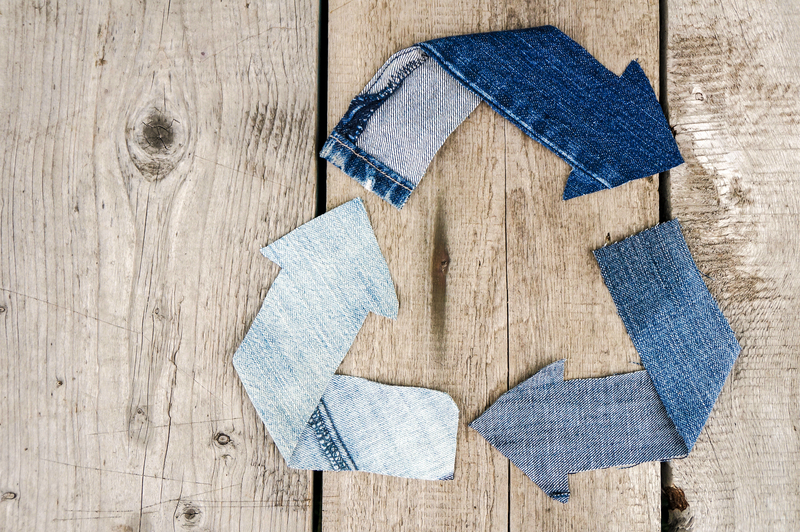A Step-by-Step Guide to Responsible PPE Waste Management
Personal Protective Equipment (PPE) waste has become a growing environmental and health concern, especially since the global outbreak of COVID-19. Masks, gloves, face shields, and other disposable items, though vital for our safety, can have a lasting negative impact on our planet if not disposed of responsibly. In this in-depth guide, you'll discover the importance of responsible PPE waste management, a step-by-step process for handling PPE waste, and sustainable practices that organizations and individuals can adopt to reduce their environmental footprint.
Why Responsible PPE Waste Management Matters
The PPE waste crisis is real and escalating. According to recent studies, millions of single-use face masks and gloves are disposed of every day, with a significant portion finding their way into landfills, oceans, and public spaces. Improper PPE disposal can:
- Spread infectious diseases by contaminating surfaces and hands
- Cause serious environmental pollution due to non-biodegradable materials
- Harm wildlife that mistakenly ingests or becomes entangled in PPE items
- Increase city waste management costs and risks for sanitation workers
Responsible PPE waste management is not just a personal duty but a collective responsibility to protect public health and preserve our environment.

Understanding PPE Waste: Definitions and Types
What Constitutes PPE Waste?
PPE waste refers to any disposable personal protective equipment used to prevent the spread of infections or hazardous substances. This includes:
- Single-use face masks (surgical or N95)
- Gloves (nitrile, latex, or vinyl)
- Face shields and goggles
- Protective gowns and coveralls
- Head caps and shoe covers
Categories of PPE Waste
- Contaminated PPE Waste: PPE exposed to infectious agents (e.g., from hospitals, quarantine centers)
- Non-contaminated PPE Waste: Used in non-medical settings with no exposure to infectious materials (e.g., masks used for basic protection in public)
The proper classification of PPE waste is crucial for determining the most appropriate disposal method.
A Step-by-Step Approach to Responsible PPE Waste Management
Step 1: Segregate PPE Waste at the Source
The first and most important step in responsible PPE disposal is segregating PPE waste from other household or workplace garbage. Segregation prevents cross-contamination and ensures that PPE is handled and processed correctly.
- Use dedicated bins, bags, or containers marked for PPE waste.
- Color-coding (e.g., red for contaminated PPE, yellow for non-contaminated) can simplify segregation processes.
- Educate staff, family, or co-workers about proper segregation protocols.
Step 2: Store PPE Waste Safely
Safe storage of PPE waste is essential to prevent accidental exposure or environmental release. Follow these best practices:
- Seal PPE waste in sturdy, leak-proof bags before disposal.
- Keep waste bags in a designated area away from high-traffic zones.
- Ensure storage containers are labeled and easy to identify.
- If handling contaminated PPE, always wear gloves and wash hands thoroughly afterward.
Step 3: Handle and Transport PPE Waste Responsibly
For organizations or workplaces, transporting PPE waste to disposal sites or collection points must adhere to local regulations. Here's how:
- Minimize handling - avoid opening bags or containers until reaching the final disposal stage.
- Train waste handlers on safe transport procedures, including wearing appropriate PPE themselves.
- Maintain logs or records of collected PPE waste for accountability and regulatory compliance.
Step 4: Choose the Right Disposal Method
Selecting the appropriate PPE waste disposal method protects both people and the environment:
- Medical Incineration: The most effective way to treat contaminated PPE waste. Incinerators destroy pathogens and break down plastics, reducing waste volume.
- Landfilling: For non-infectious PPE, disposal in secure landfills is permissible but should be avoided if recycling or safer alternatives are available.
- Autoclaving: Some medical waste facilities use steam sterilization (autoclaves) before shredding PPE for safer handling and landfilling.
- *Never burn PPE waste in open areas*, as it releases toxic fumes and microplastics.
Step 5: Consider Sustainable Alternatives
Reducing the environmental burden of PPE waste means exploring eco-friendly management options:
- Recyclable PPE: Seek products made from recyclable plastics where available, and ensure collection points allow for this waste type.
- Reusable PPE: In non-medical settings, consider washable masks and gowns to limit single-use waste.
- Innovative Waste-to-Energy: Some advanced facilities can convert PPE waste into energy, reducing landfill reliance.
- Support and participate in take-back or recycling programs for used PPE (check with local authorities).
Step 6: Educate and Raise Awareness
Awareness and training are vital for effective PPE waste management at both the organizational and community levels.
- Host workshops on PPE waste classification and proper disposal methods.
- Develop signage and informational materials for waste segregation points.
- Promote responsible behavior through campaigns and incentives for proper PPE waste disposal.
Regulations and Compliance: Knowing the Law
National and local regulations govern PPE waste disposal to ensure public and environmental safety. Key legal requirements may include:
- Mandatory segregation of medical PPE waste
- Use of certified transporters and disposal facilities
- Record-keeping and reporting of PPE waste quantities
- Adherence to the Occupational Safety and Health Administration (OSHA), World Health Organization (WHO), or regional standards
Stay informed about updates to legislation, and always follow official guidance for PPE waste management in your area.
Challenges in PPE Waste Management
Logistical Issues
The sudden surge in PPE use has overwhelmed existing waste management infrastructure in many regions. Ensuring enough capacity for safe collection, transport, and disposal is challenging.
Lack of Public Awareness
Not everyone understands that improper PPE disposal is hazardous. Many single-use masks and gloves end up as litter--posing risks to both the public and wildlife.
Safe Material Handling
PPE waste can harbor pathogens. Ensuring that sanitation workers have access to proper training and protective gear is vital for their safety.
Best Practices for Individuals
- Always dispose of PPE in designated bins--never in recycling or compost piles
- Minimize handling--use tongs or gloves and wash hands after disposing of PPE
- Do not flush PPE down toilets or drains as this causes blockages and pollution
- Try to limit single-use PPE by choosing reusable options where safe and practical
Best Practices for Businesses and Healthcare Facilities
- Implement clear waste segregation protocols in all workplaces and patient care areas
- Offer staff regular training in sanitation and safe waste handling
- Partner with certified waste management companies equipped to handle hazardous waste
- Monitor and audit PPE waste streams to look for opportunities to reduce, reuse, or recycle
Innovations and Future Directions in PPE Waste Management
Research and technology are transforming PPE waste management with exciting new approaches:
- Biodegradable PPE: Scientists are developing masks and gloves made from plant-based materials that decompose naturally.
- PPE Recycling Plants: Specialized facilities can melt down PPE plastics for reuse in other industries.
- Automated Sorting: Smart bins and AI-powered robotics can improve the accuracy of PPE waste segregation.
- Policy Innovation: Cities are enacting "polluter pays" laws and PPE collection schemes to incentivize safe practices.

Conclusion: Working Together for a Safer, Cleaner World
The rise in PPE usage has protected millions--but it also underscores our shared responsibility to manage PPE waste responsibly. By following the steps in this guide--segregating, storing, handling, and disposing of PPE correctly--we can protect our communities from disease and keep our planet clean. Adopt sustainable alternatives, stay informed about legal requirements, and advocate for innovative solutions.
Your commitment to responsible PPE waste management--at home, work, or school--makes a lasting difference. Together, we can turn the tide on PPE pollution and create a safer, healthier environment for all.
Frequently Asked Questions about PPE Waste Management
- How should I dispose of disposable masks and gloves at home?
- Place used masks and gloves in a sealed bag and dispose of them in a dedicated PPE waste bin, if available. Do not put them in recycling bins or flush them away.
- Is it safe to recycle PPE waste?
- Most single-use PPE is not recyclable through standard curbside programs due to contamination risks, but check for specialized PPE recycling schemes in your area.
- What can businesses do to reduce PPE waste?
- Use reusable PPE when possible, educate staff, partner with certified waste collectors, and opt for suppliers offering biodegradable or recyclable products.
- Are there eco-friendly alternatives to traditional PPE?
- Yes, several manufacturers now offer biodegradable masks and gloves. Reusable options, such as washable masks and face shields, also help reduce waste.
If you want to learn more about sustainable PPE waste management, follow our blog for updates on best practices and innovations.